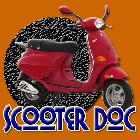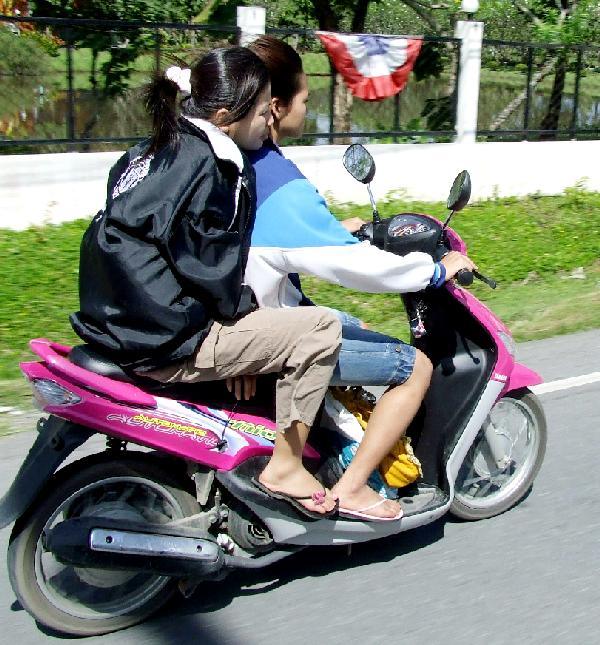Motor Scooters: Motor Scooter Image
Site Map
What's New
Features
Scooters from Amazon.comYes Man, Scooters in Film
Larry Crowne and scootering
Helmet Free scootering
Scooters in a failing economy
Scooter Economy
Scooter ROI Analysis
Scooter pays for itself
Types of Motorscooters
Why ride a scooter?
Motorscooter FAQ
Buying Scooters Online
Join Our Mailing List
Recommend this site
Scooter Inspiration
Scooter EconomyMotorscooter Advantages
Motorscooter Disadvantages
Motorscooter Books
Motor Scooter Poetry
Business Scooter Travel
Motorscooter Posters
Motorscooters in California
Scooting in the UK
Green Scooting in China
Scooting in Italy
Motorscooters in Iraq
Motor Scooter History
The Ice-Cream Scooter
Pets and Motorscooters
RVs and Motorscooters
Gas vs. Electric Scooters?
Put-putting Pleasures
Recommended Scooters
Scooter Culture
Larry Crowne (film)
Dating and Scooter Culture
Motorscooter Freedom
Motor Scooter Image
Scooter Lib
Back to School on a scooter
Motor Scooter Music
Motorscooter Camping
Types of Motorscooters
Classic Motor ScootersItalian Motor Scooters
The Vespa Motorscooter
The Aprilia Motorscooter
Falcon Electric Scooters
50cc Motorscooters
Kymco Motorscooters
GT Chaunl Scooters
Chinese Motor Scooters
TANK Motorscooters
The RoadRunner Scooter
Roketa Motorscooters
The I-scooter
Moped Scooters
Mopeds
Scooter Choices
Best Scooter DealsThe Performance Scooter
The Luxury Scooter
The Minimalist Scooter
The Classic Scooter
The Basic Scooter
The I-scooter
The Electric Scooter
Stand-up Scooters
The Mobility Scooter
Used Motorscooters
California Legal Scooters
Toy Scooters
Practical matters
Trouble starting a scooterScooters and the Environment
Scooter Return On Investment Analysis
Motor Scooter Repair
The Scooter Commute
Scooter Repair Shops
Scooter Replacement Parts
Vespa Repair
Scheduled Maintenance
Fuel Efficient Driving
Essential Scooterist Kit
Passengers on a Scooter
Motor Scooter parking
Using the Kick Starter
Motor Scooter Batteries
Motor Scooter Stands
Rotating a Scooter
Cargo Storage Issues
Chinese Scooter Alarms
Scooter Roadside Assistance
Affordable Insurance
Scootering in groups
Motorscooter safety
Motorscooter SafetyDriving a Motorscooter
MSF Manual: Your Scooter
Scooters and Potholes
Important, before you drive
Motorscooter Helmets
All-weather Scootering
The Oily Path of Safety
Motorscooter Journal
Motorscooter JournalOff-highway scooter routes
The Scooterdoc
Scooter Choice Ethics
India Shuns Scooters
Left-handed Motorscooters
Other Types of Scooters
Mobility ScootersScooter-inspired Vehicles
Electric Motorscooters
The Three-wheel Scooter

Vespa Service In
Southern California
The Motor Scooter Image

The image of the motorcycle constrasts markedly with that of the motorscooter. The former brings to mind power, speed, irresponsibility, nonconformity, male dominance, tattoos, bikerchicks, noise, and the highways of America. The scooter, on the other hand, conjures up images of navigating through Hyde Park Corner on one's way to Piccadilly (See Scootering in the UK), experiencing the sights, smells and sounds of spring in the Champs-Elysee, or riding the pillion seat and being given a tour through olive groves and sunny vinyard lanes of Tuscany by a vivacious Italiana named Giulietta, met serendipitously in a Sienese marketplace whilst in friendly dispute over the price of an Etruscan cheese-grater (See Scootering in Italy). Well ... perhaps scooter-evoked images are not exactly the same for everyone, but they are without doubt a world away from those of the motorcycle.

The Motorscooter And Motorcycle Are From Two Different Worlds
The motorcycle is a machine foremost – it's got chunks of machine sticking out all over the place, bits of motor showing there, tubes here, wires there, an unmistakable gas tank bloating out and exposed and a great roar is emitted from the engine, while the motorscooter is much more about the human -- the rider and passenger. Controls are simple and easy to use,. The noise output is subdued, and the engine, fluids, fuel tank and wiring are all obscured behind designer panels. The noisy, oily, hot, smelly, metallic power of the machine is not a part of the scooter riding experience. Instead, the scooter is more like an elegant piece of furniture whose whose look and feel is dictated not by the machine below but by the aesthetics and ergonomics of the human interface above.
The History of motorscooters includes a number of periods during which the style and image of the scooter experienced great popularity among very specific groups, the mods, for example. In America, 60's scooter use was characterized by a certain rebellious flavor, however, the modern use of those classic scooters is largely limited to those who can afford to pay five times as much for a Lambretta or Vespa than is the going rate for their modern inexpensive counterparts, and this fact does rather erode any vestiges of rebellious association that might have adhered to the former. The motorscooter mystique survives however and, with serviceable, inexpensive, but highly stylish brands available for less than $1000, they have been adopted as the favored mode of transportation in many different societal niches, from the entirely utilitarian to an expression of ostentatious simplicity. Far more sexually egalitarian than motorscycles (See Scooter Lib), scooters are the dominant form of transportation for both people and cargo in many places in the world. See passenger and freight scooting in Vietnam. and have, in some countries, notably Taiwan, become an essential part of coming of age. See Dating and Scooter Culture.

See full video of the famous Vespa scene on our Vespa page.
Though popular throughout europe and universally used in many far-east countries, Italy is both the historical and image capital of Scooterdom See this wonderful little Scootercam video tour of Rome. (see History of Motor Scooters). They have played lasting roles in film (Roman Holiday, and La Dolce Vita to name but two), and in the daily life of the Italian people and their infamously idiosyncratic traffic and driving practices (In the words of one Italian visiting and experiencing the traffic of LA: "Don't American cars have horns?").

Although scooter usage spans all ages and nearly all income brackets in many countries around the world, they are stull largely shunned by the American middle class who, with gas traditionally inexpensive, streets and highways capacious, and parking plentiful, have always favored larger vehicles. However, as ecological factors gradually gain the attention they deserve, gas prices rise, and congenstion increases, more US drivers may follow the lead of Europe and Asia and embrace the scooter solution.
Bookmark this page to: